Capcom vs. SNK 2 Preview
We report on the status of the upcoming installment to Capcom's crazy crossover fighter.
Last year, legendary fighters from the two most famous and prolific 2D fighting game developers came together in Capcom vs. SNK: Millennium Match 2000. The result was a game that was astonishing in concept and engaging to play but not without certain shortcomings in its execution. One year later, the second incarnation of the series is in the midst of development, and some very interesting changes are taking place. Aside from the requisite new characters and backgrounds, substantial new gameplay innovations and fresh approaches to style and content should provide you with greater freedom to choose how you play and provide a more solid game overall. As a publisher, Capcom continually takes flak for milking its franchises--but in light of games like Capcom vs. SNK 2, it can't be accused of not giving the fans what they want. What many fans wanted was the standard Capcom six-button layout, and this is the first and smallest change in store for the series.
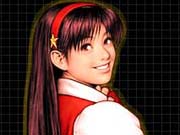
Like the original Capcom vs. SNK, one of the greatest results of two universes colliding is the massive library of characters. Both companies have brought many memorable combatants into existence over the years, and even if you're not a fan of these characters, you're likely to find at least one or two character designs that grab your interest. Pure warriors like Ryu and Haohmaru, beautiful and powerful females such as Chun-Li and Mai, freaks of nature like Blanka, vigilante high school students, and many more original and colorful individuals of varied nationalities and backgrounds populate the games created by either company. In the original Capcom vs. SNK, the fighters were almost exclusively from two expansive series: Street Fighter and The King of Fighters. This second time around, Capcom is including a broader range of characters, the roster totaling 48. All the characters from the first game are scheduled to return with former secret characters Morrigan and Nakoruru immediately available, and two others waiting in the game's depths.

The newest faces from Capcom's library include the dual-baton swinging Englishman, Eagle, from the original Street Fighter; and the cool, calculating high school student Kyosuke from Rival Schools and Project Justice. From Final Fight 2 comes the sexy female ninja Maki, who has more than a passing resemblance to SNK's Mai Shiranui but swings a tonfa instead of a fan. Maki's former enemy Rolento--from the Final Fight and the Street Fighter Alpha series--as well as Street Fighter III's Yun and Yang also join the battle on the Capcom side. SNK's side benefits from the addition of two blade-wielding warriors: the samurai Haohmaru from Samurai Shodown and the skilled female sword fighter Hibiki from Last Blade 2. The schoolgirl starlet Athena will also face Capcom's finest for the first time, along with Rock Howard from Fatal Fury: Mark of the Wolves. With the villain Geese Howard as a father and Terry Bogard as a mentor, Rock has inherited and learned many powerful fighting techniques, and he incorporates moves from both famous fighters. The game will also introduce the criminal duo of Chang and Choi from King of Fighters, who function as one character. The massive Chang is controlled directly by the player, while certain moves will let the miniature Choi back up his companion. Ryuhaku Todo, a martial artist from the original Art of Fighting, rounds out the new character roster on the SNK side.
Groovy!
With the addition of numerous new characters comes a number of new "grooves," or fighting modes; as well as a change in the ratio system. Now instead of choosing from Capcom or SNK groove, there are fully six different grooves to choose from, which affect your characters' abilities and performance. These grooves are designated C, A, P for Capcom and S, N, K for SNK. Each offers you a gauge for storing and using supermoves and gives you different basic abilities. The result is a wide variety of play styles that mirror different fighting games published by the two companies.
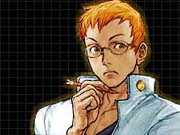
C and S grooves are similar to those found in the first game. The new A groove gives you a two-level bar that lets you perform level one supers or custom combos. P groove will let you perform Street Fighter III-style parries, but you won't be able to air-block or counterattack. N groove lets you stock multiple supers and K groove emulates the Samurai Shodown series, where the character enters rage mode upon taking enough damage. In rage mode you have a limited time to dish out 35 percent more damage or let loose with a level three super. Here's a more detailed explanation of all six grooves:
Capcom Grooves
The Capcom side's characters build up their supergauge primarily by attacking the enemy and using special moves. These grooves use elements from Street Fighter II, Street Fighter Alpha, and the Street Fighter III series.
C Groove
This groove is similar to that of the Alpha series and Capcom groove from the original Cap vs. SNK. You have a three-tiered supergauge, and you can use level one, two, or three supercombos by executing the command and pressing the button of desired strength. Overall this groove can be seen as the modern, technical Capcom style. Basic abilities include:
Air Blocking: Lets character block attacks in midair.
Counter Attacks (MP +MK): Lets character immediately counter while blocking an attack. Requires supergauge.
Dashing (tap forward twice): Lets character quickly advance a predetermined distance forward.
Forward Evade (forward +LP +LK): Lets characters move forward a limited distance while avoiding mid- and high-level attacks.
Delayed stand up (hold all three punches): Lets character remain on ground to avoid any follow-up attacks.
A Groove
This second groove uses Custom Combos from the Alpha series and is probably the most original of Capcom's styles. Characters using this groove will have a two-tiered supergauge. Filling the first level gives you access to level one supers only, after filling the second level the character can execute a custom combo where you are forced to advance toward your opponent, and shadow images copy your moves for multiple hits. A level one super can be executed at any time during the custom combo, but doing so will immediately drain meter and stop the combo. Basic abilities include:
Air Blocking: Lets character block attacks in midair.
Counter Attacks (MP +MK): Lets character immediately counter while blocking an attack. Requires supergauge.
Running (tap forward twice): Characters can sprint forward to cover as much distance as desired.
Forward Evade (forward +LP +LK): Lets the characters move forward a limited distance while avoiding mid- and high-level attacks.
Safe Fall (hold all three punches): Lets a character execute a roll or recovery after being knocked down.
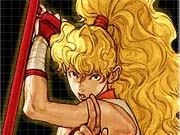
P Groove
P groove focuses on power and timing. The P groove supergauge has one solid bar, and only level three supers can be executed when the bar is completely filled. This groove also allows for high, low, and air parries similar to the Street Fighter III series. Out of all three Capcom grooves, this can be viewed as the most traditional fighting mode. Basic abilities include:
Parries (tap forward or down at time of attack): As described above.
Dashing (tap forward twice): Lets character quickly advance a predetermined distance forward.
Short Jump: By tapping the controller up or diagonal up, a faster and lower jump can be executed.
Delayed stand up (hold all three punches): Lets character remain on ground to avoid any follow-up attacks.
SNK Grooves
Fighters from the SNK camp have a number of ways to fill their supergauge, including the signature manual charge. Influencing these grooves are series like King of Fighters, Fatal Fury, and Samurai Shodown.
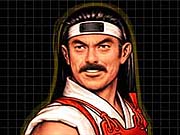
S Groove
This is SNK's classic groove, reminiscent of earlier installments of the King of Fighters series. Holding both fierce buttons down will charge the desperation-power meter, and a level one super can be used when the meter is full. When your life bar is reduced to 15 percent, the character can execute unlimited level one supers or a level three super if you also have a full gauge. Basic abilities include:
Counter Attacks (MP +MK): Lets character immediately counter while blocking an attack. Requires supergauge.
Dashing (tap forward twice): Lets character quickly advance a predetermined distance forward.
Dodge (LP + LK): Lets the character execute a quick dodge, avoiding attacks momentarily.
Short Jump: By tapping the controller up or diagonal up, a faster and lower jump can be executed.
Delayed stand up (hold all three punches): Lets character remain on ground to avoid any follow-up attacks.
N Groove
This groove is based on systems from recent installments of The King of Fighters and bears heavy resemblance to the series' advanced mode. The supergauge can hold three stocks, each worth a level one desperation move. When all three levels are filled, pressing HP + HK will enable MAX mode, which provides a limited time in which to use level three supers. This is the most technical of SNK's grooves. Basic abilities include:
Counter Attacks (MP +MK): Lets character immediately counter while blocking an attack. Requires supergauge.
Counter Evasion (LP +LK): Lets a character escape damage and set up an attack opportunity.
Running (tap forward twice): Characters can sprint forward to cover as much distance as desired.
Forward Evade (forward +LP +LK): Lets characters move forward a limited distance while avoiding mid- and high-level attacks.
Short Jump: By tapping the controller up or diagonal up, a faster and lower jump can be executed.
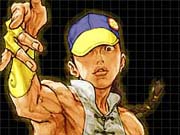
K Groove
Borrowing from the Samurai Shodown and Fatal Fury series, this groove is SNK's equivalent to Capcom's third groove. Raw power and split-second timing are accentuated. The supergauge only rises as you take damage, or if you counter a move at the last possible instant. Once the gauge is full, your character flashes red and, for a limited time, deals 35 percent more damage and has a chance to use one level three super. Basic abilities include:
Running (tap forward twice): Characters can sprint forward to cover as much distance as desired.
Short Jump: By tapping the controller up or diagonal up, a faster and lower jump can be executed.
Safe Fall (hold all three punches): Lets a character execute a roll or recovery after being knocked down.
Final Thoughts
Capcom is also giving you more control over the ratio system, letting you select up to three characters and assign their ratio as you see fit. A team could consist of a ratio three character and a ratio one, two ratio two fighters, or any other combination. You can increase any character's power by giving that character a heavier ratio, so it's possible that a ratio one M. Bison could find himself totally overpowered by a ratio four Sakura!

One last gameplay note: Unlike in its predecessor, Capcom vs. SNK 2 has only one version of each character, meaning that one definitive version of a character has all special moves and supers that he or she can use. (In the original game, you could unlock an additional "EX" mode for each character, which sported a different set of special attacks.) For example, Yuri has her five special moves and all three of her supers, and Sagat returns in his more complex version and retains all of his Alpha 3 moves. Many weaker characters have also been beefed-up significantly, allowing them compete with some of stronger ones.
One of the areas in which things didn't quite seem to mesh in the original Capcom vs. SNK was in its graphics. Some character sprites had been freshly redrawn or touched up, but others were ripped straight out of games that were released several years ago. Visual discontinuity in the sequel is still apparent, but some improvements have been made in this regard.
Most of the new character graphics have been created from scratch, completely redrawn, or taken directly from a relatively recent game. Perhaps the best news for Capcom fans is that the badly aging Street Fighter Alpha Chun-Li has been replaced with the Chun-Li from Street Fighter III: Third Strike. Fans will be pleased that Dan and Joe Higashi were redrawn for Capcom vs. SNK Pro, and just about every returning SNK character has at least a few new animations. Unfortunately there are still a few ugly ducklings in the mix, as Capcom's Sakura and many of the older SNK characters still look a bit rough around the edges compared to their updated peers.
Backgrounds and special effects both appear to be a step up from the last installment. Character sprites don't seem quite as out of place as they did on some of the original backgrounds, and the new backgrounds feature some good use of 3D effects and other special effects. One impressive stage has a long cruise ship sail toward the screen, displaying the game's logo on its side. Another stage takes place among sand dunes, and off-road vehicles soar over the arena during the fight. Special moves also look better than ever, and you'll notice more of the entertaining special intros between characters.
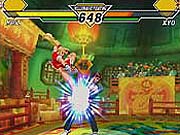
Capcom vs. SNK 2 has recently been released in Japan, and, by all accounts, it works to expand on all the concepts put forth by its predecessor. It comes closer to archiving the mechanics of past 2D fighting greats than any game before it, and, as such, will prove to be a treat to fans of the genre. Questions of balance still remain, however, and if the history of fighting games is any indication, they'll likely exist throughout the game's life. The whole of the game seems polished, though, and we've encountered no glaring oversights, balancewise, apart from certain gratuitously powerful hidden characters.
The game is already out in Japan, and its mostly-English menu-system makes it a sound import. It's due to hit North America in early November, though, so the wait will not be terribly long for those who so choose. We'll have more for you as soon as it becomes available.
Got a news tip or want to contact us directly? Email news@gamespot.com
Join the conversation